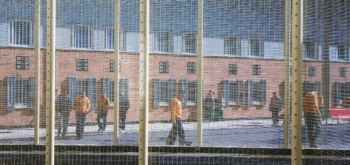 Children victimised by online sexual abuse grow up with feelings of ‘powerlessness and paranoia’, warned a leading children’s charity. Internet giants Google and Microsoft announced on Monday that the search engine will block as many as 100,000 search results that relate to sexual child abuse to crack down on access of this illegal material.
Children victimised by online sexual abuse grow up with feelings of ‘powerlessness and paranoia’, warned a leading children’s charity. Internet giants Google and Microsoft announced on Monday that the search engine will block as many as 100,000 search results that relate to sexual child abuse to crack down on access of this illegal material.
In response to the technological advances, head of child safety online for NSPCC, Claire Lilley said: ‘We really welcome the leadership the Government and the Prime Minister have shown on this issue and were really impressed by the determination and the commitment.’
But Lilley went on to stress: ‘We don’t think there are enough arrests. The CEOP (Child Exploitation and Online Protection centre) estimate that there are 50,000 people in the UK looking at images at any one time and there are no more than 2500 arrests in any one year.’
‘The actual act of abuse is obviously horrific in itself, but then for children to grow up to become adults with the knowledge that those images have been loaded on to the Internet and circulated to any number of people. They don’t know if the images have been seen by one person or 10,000 people. It creates a very distressing feeling of powerlessness and paranoia in some people.’
Claire Lilley
Lilley said that the NSPCC only ever judged the success of the efforts ‘in one way… the reduction of the number of people looking at the images and the number of children protected by harm. What we have to bear in mind is that behind every image is a little boy or little girl who’s had unspeakable abuse committed against them.’
‘We want to see more of the networks who are disseminating this vile poisonous material tackled and broken up – and that requires the best brains in the industry.’
Claire Lilley
Lilley stressed the need for ‘more prevention and deterrence tactics’ and suggested that more needed to be done in terms of ‘peer-to-peer networks’ and ‘improving the amount of police resource which is focused on this issue’. Society needed to come to a shared understanding of ‘zero-tolerance’, she said, adding: ‘We need to send a very clear message to paedophiles that even if they haven’t physically touched a child they are still committing child sexual abuse when they are looking at images.’






